 "ttyymmnn" (ttyymmnn)
"ttyymmnn" (ttyymmnn)
07/31/2015 at 13:35 • Filed to: planelopnik, planelopnik history
 8
8
 32
32
 "ttyymmnn" (ttyymmnn)
"ttyymmnn" (ttyymmnn)
07/31/2015 at 13:35 • Filed to: planelopnik, planelopnik history |  8 8
|  32 32 |
This is today’s Aviation History Speed Round , getting you caught up on milestones and important historical events in aviation from July 29 through July 31.
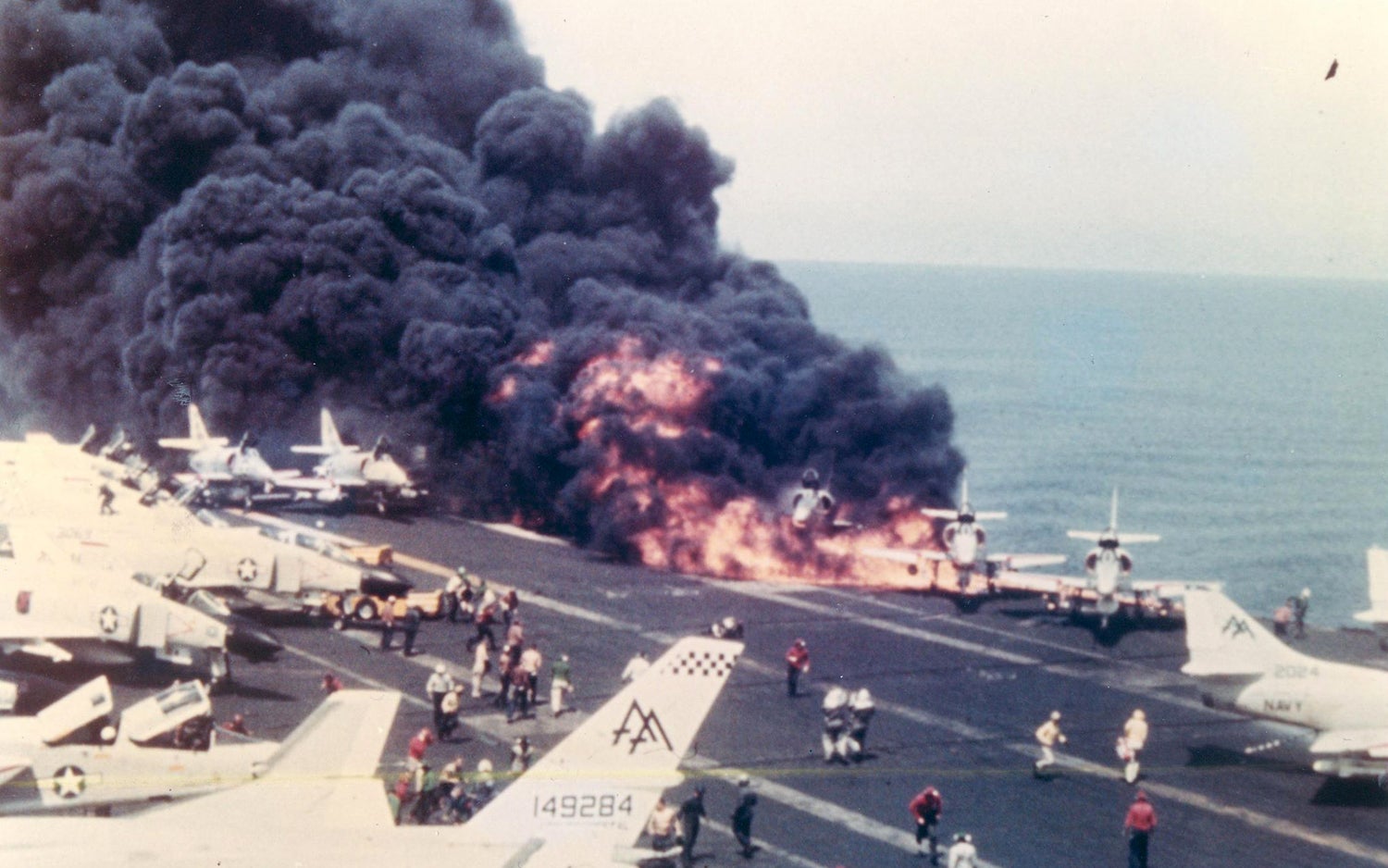
July 29, 1967 – A fire on the flight deck of USS Forrestal kills 134 crewmen and injures 161. In early summer of 1967, the carrier USS Forrestal (CVA-59) sailed from Norfolk, Virginia to take up a position at Yankee Station in the Gulf of Tonkin off the coast of Vietnam. There, Forrestal would launch attacks against North Vietnam and support the troops who were fighting in southeast Asia. On the day preceding the accident, Forrestal received a shipment of 1000-pound bombs, but many of them were older, unstable bombs that had been improperly stored in Guam prior to their delivery. While the captain of Forrestal wanted to refuse them, he ended up taking them begrudgingly because of an acute shortage of munitions, and the need for the bombs on missions the following day. To appease the bomb handlers on the carrier, the bombs were stored on the flight deck, rather than in the armory below decks where an accidental detonation would sink the entire ship. At approximately 10:50 am on July 29, a 5-inch “Zuni” rocket fired accidentally from a parked F-4 Phantom and struck the external fuel tank on an armed A-4 Skyhawk. While the rocket did not explode, it punctured the fuel tank, and the leaking fuel ignited. The ensuing conflagration caused one of the unstable bombs loaded on the Skyhawk to detonate, blowing a hole in the armored flight deck and covering damage control teams with shrapnel and burning fuel. In all, 9 explosions took place, 8 of which were from the unstable bombs, tearing holes in the flight deck that allowed burning jet fuel to drain into the living quarters below the flight deck and into the interior of the ship. While Forrestal’s crew was eventually able to extinguish the fire, 134 crewmen lay dead, and 161 were injured, many of them seriously. Forrestal would spend 207 days undergoing repairs before returning to service.
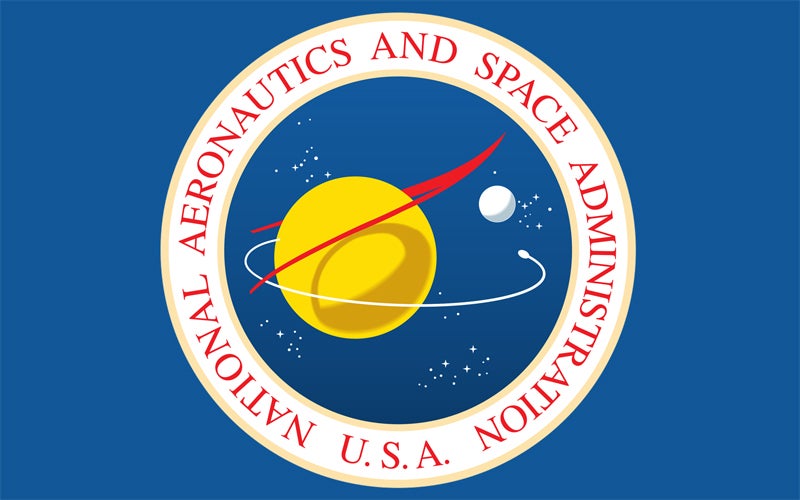
July 29, 1958 – President Dwight Eisenhower signs the National Aeronautics and Space Act, creating the National Aeronautics and Space Administration (NASA). The National Aeronautics and Space Administration has its origin in the National Advisory Committee for Aeronautics, a US government agency created in 1915 to further the efforts of aeronautic research and development in the United States. But as America entered the space age following WWII, and as they began to compete with the Soviet Union to be the first nation into space, it became clear that the country needed an organization for a new era. The !!!error: Indecipherable SUB-paragraph formatting!!! carries this simple preamble: “To provide for research into problems of flight within and outside the earth’s atmosphere, and for other purposes.” With the formation of NASA, NACA ceased to be, and all of its assets and personnel were transferred to the new agency on October 1, 1958. While NASA has done, and continues to do, research that carry military implications, its stated purpose is that of a peaceful, non-military organization, created largely to offset what was seen as clear Russian military designs in space. The NASA Act goes on to say that “The Congress hereby declares that it is the policy of the United States that activities in space should be devoted to peaceful purposes for the benefit of all mankind.” In addition to NASA’s high profile space programs such as Mercury, Gemini, Apollo, the Space Shuttle, and the International Space Station, NASA continues to fund research into all aspects of space exploration, space travel, aviation, and related sciences. NASA’s latest large project, the !!!error: Indecipherable SUB-paragraph formatting!!! and the Orion Multi-Purpose Crew Vehicle, will see astronauts return to the Moon, create a permanent lunar station, and one day journey to Mars.
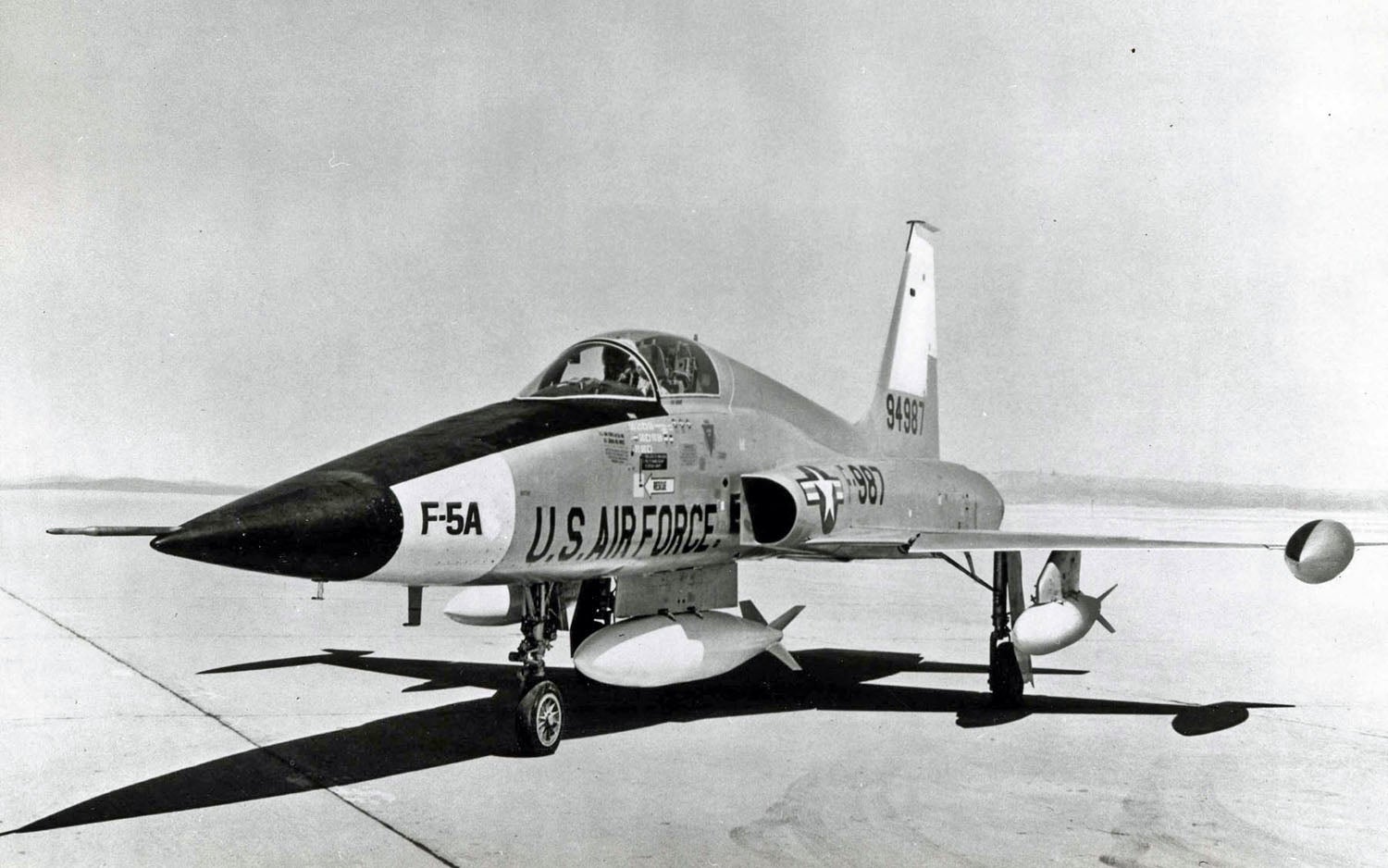
July 30, 1959 – The first flight of the Northrop F-5A Freedom Fighter. As jet fighter development progressed through the 1950s, fighters became bigger, heavier, more complex—and more expensive. Northrop decided to buck this trend and develop a small, lightweight, yet powerful fighter that they hoped would interest the US Air Force, as well as international export customers. The Freedom Fighter began as an internal, company-funded project of Northrop to design a sleek, tight airframe around two small but powerful General Electric J58 turbojet engines, engines that were originally designed to power the !!!error: Indecipherable SUB-paragraph formatting!!! decoy drone. After two years of development, the Air Force and Navy finally took interest in the project, but as a jet trainer rather than a fighter, so Northrop developed the aircraft into the T-38 Talon, a jet trainer that is still in use today. Development of the fighter version continued, and in 1962, based on its high performance and low cost, the F-5 was chosen as the export fighter for the Military Assistance Program, which saw the aircraft sold to numerous allied countries. To evaluate the potential of the F-5 for combat operations, the Air Force sent 12 F-5A aircraft to Vietnam in 1965 under the codename Project Skoshi Tiger, and it was there that the F-5 received the nickname “Tiger.” Later developments of the F-5 airframe saw the creation of the F-5E/F Tiger II, with more powerful engines, an improved radar and a greater wingspan, as well as the final iteration, the F-20 Tigershark, which was designed as an export fighter to compete with the General Dynamics F-16 but was ultimately unsuccessful.
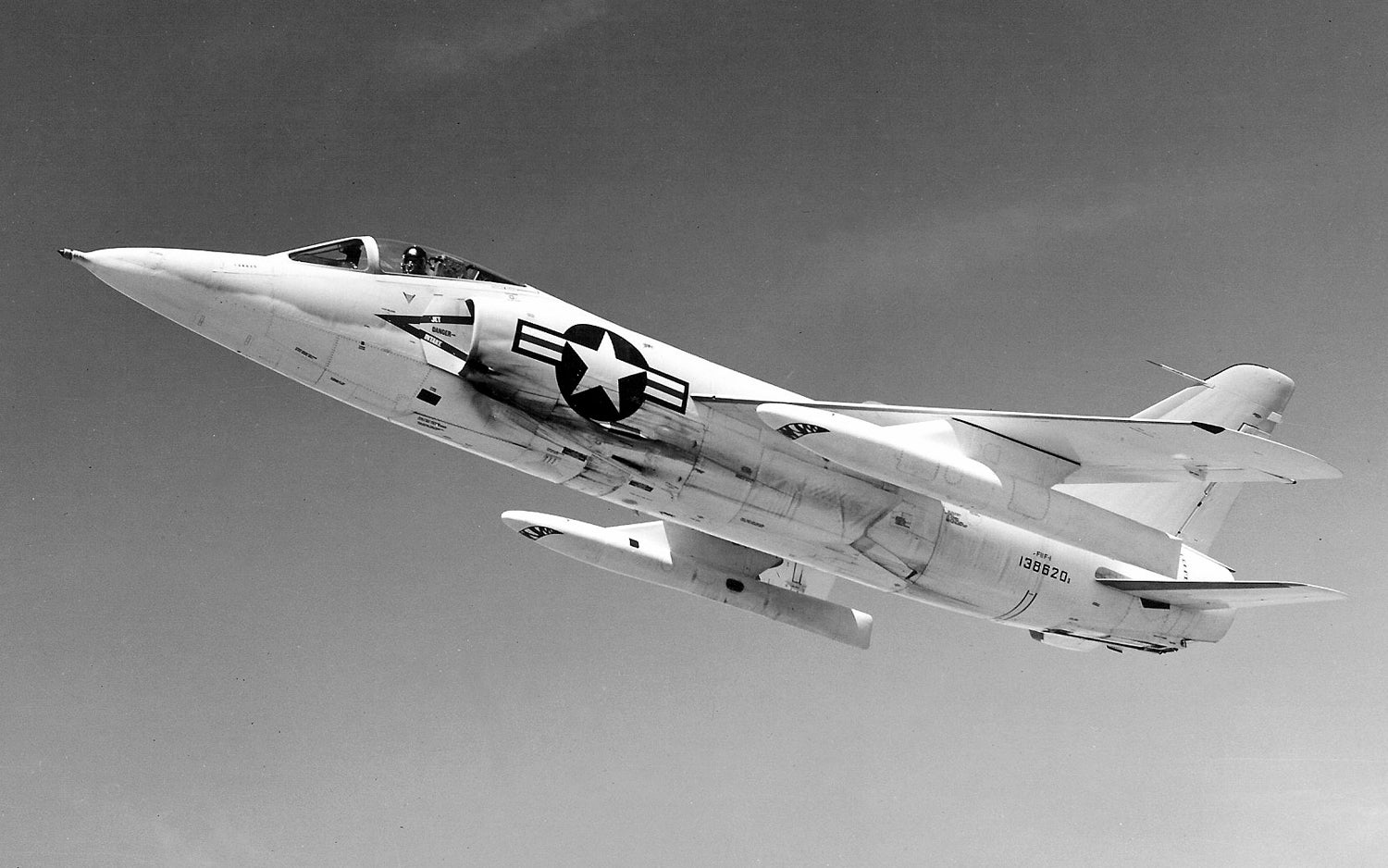
July 30, 1954 – The first flight of the Grumman F-11 Tiger.
The F-11 Tiger was a day fighter developed for the US Navy by Grumman that began as an advanced development of their Panther/Cougar series of carrier-based fighters. To obtain what would become the classic shape of a single-engine, supersonic fighter, Grumman eliminated the wing root air intakes and moved them forward to help reduce drag, the wing was made thinner, necessitating the movement of the main gear to the fuselage, the high-mounted stabilizer was moved down to the fuselage, and the the fuselage was reshaped to take advantage of the newly discovered
!!!error: Indecipherable SUB-paragraph formatting!!!
principle. The result was a small, compact, narrow-waisted fighter that was powered first by a Wright J65 non-afterburning engine, then later by a Wright J65 equipped with an afterburner. The plane was so small that only the wingtips needed folding for carrier storage. The Tiger became somewhat of a work in progress, as subsequent orders for the aircraft saw continuous development to improve performance and cockpit visibility. The Tiger also discovered one of the new problems inherent in jet fighters when, during a weapons test, the pilot fired his cannons while in a shallow dive, only to overtake his own ammunition and shoot himself down. The pilot ejected safely, but the aircraft was lost. Like so many fighter designs of that era, the Tiger’s operational career was relatively short, as newer, more advanced designs were being developed at a rapid pace. While the F-11’s service life was short, it gained prominence when the fighter was selected as the platform for the Navy’s Blue Angels in 1957, and flew it until 1968.
Short Take Off
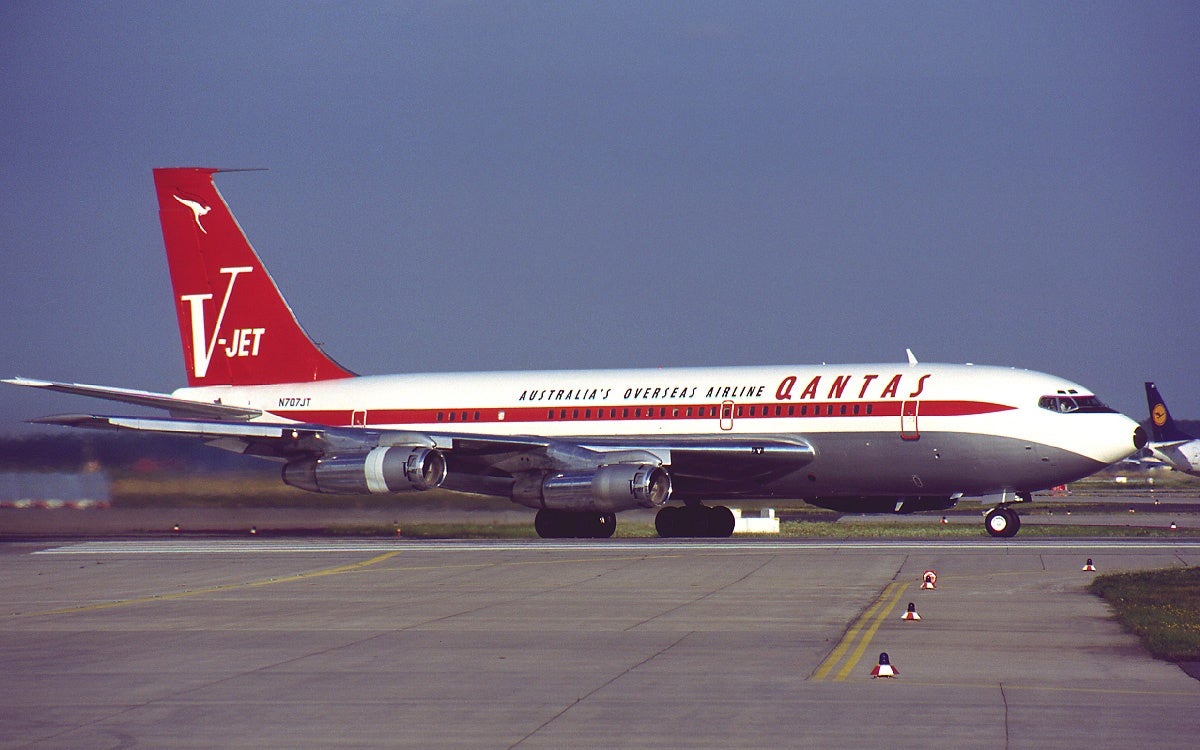
July 29, 1959 – Australian carrier QANTAS introduces the Boeing 707 on its route from Sydney to San Francisco , marking the world’s first transpacific jet airliner service. (Photo by Konstantin von Wedelstaedt via !!!error: Indecipherable SUB-paragraph formatting!!! )
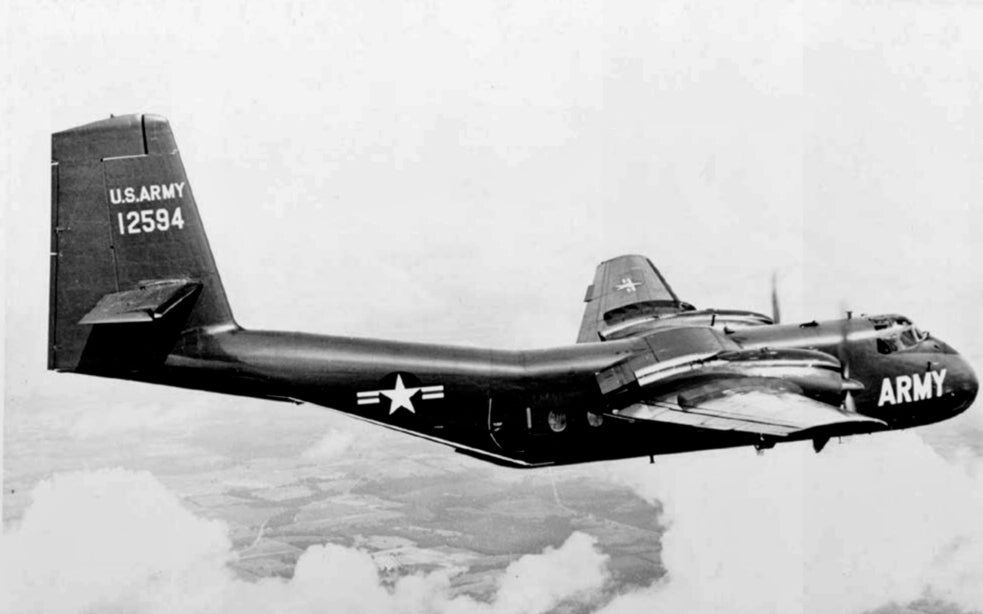
July 30, 1958 – The first flight of the de Havilland Canada DHC-4 Caribou
, a cargo and special operations aircraft designed to provide the cargo capacity of the DC-3 in a STOL aircraft. 307 were built, and they served primarily with the US Army, US Air Force and Royal Australian Air Force.
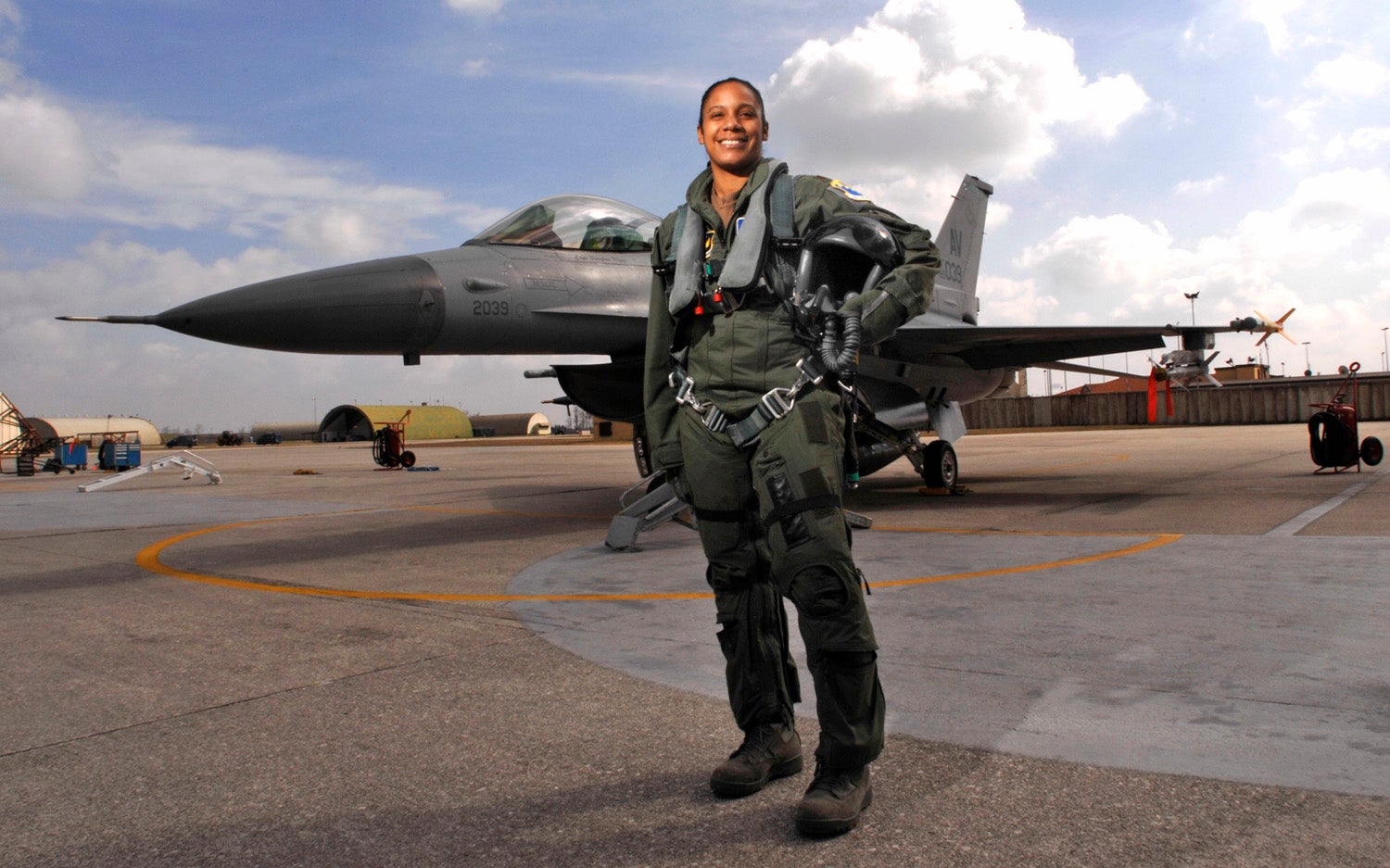
July 31, 1991 – The US Senate votes to allow women to fly combat aircraft. Following the Gulf War, where women pilots often flew into combat zones in support roles, Congress overturned the 43-year-old ban that kept women pilots out of combat. Women pilots are now permitted to serve in combat roles in all American armed services.
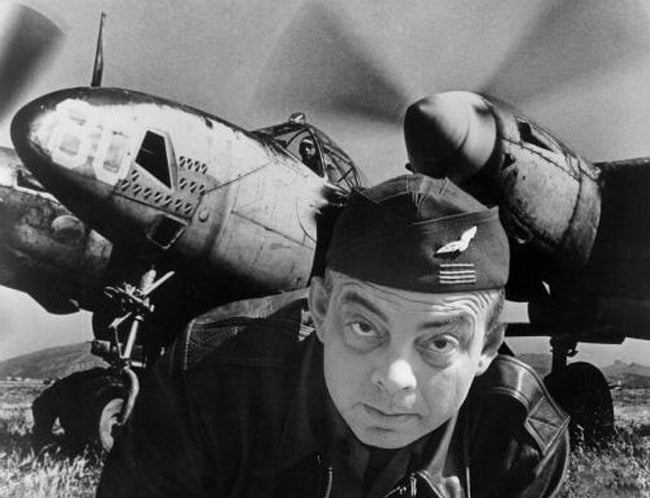
July 31, 1944 – Aviation pioneer and author Antoine de Saint-Exupéry vanishes while flying a Lockheed F-5B , the reconnaissance version of the P-38, on his final mission for the Free French Forces in WWII.
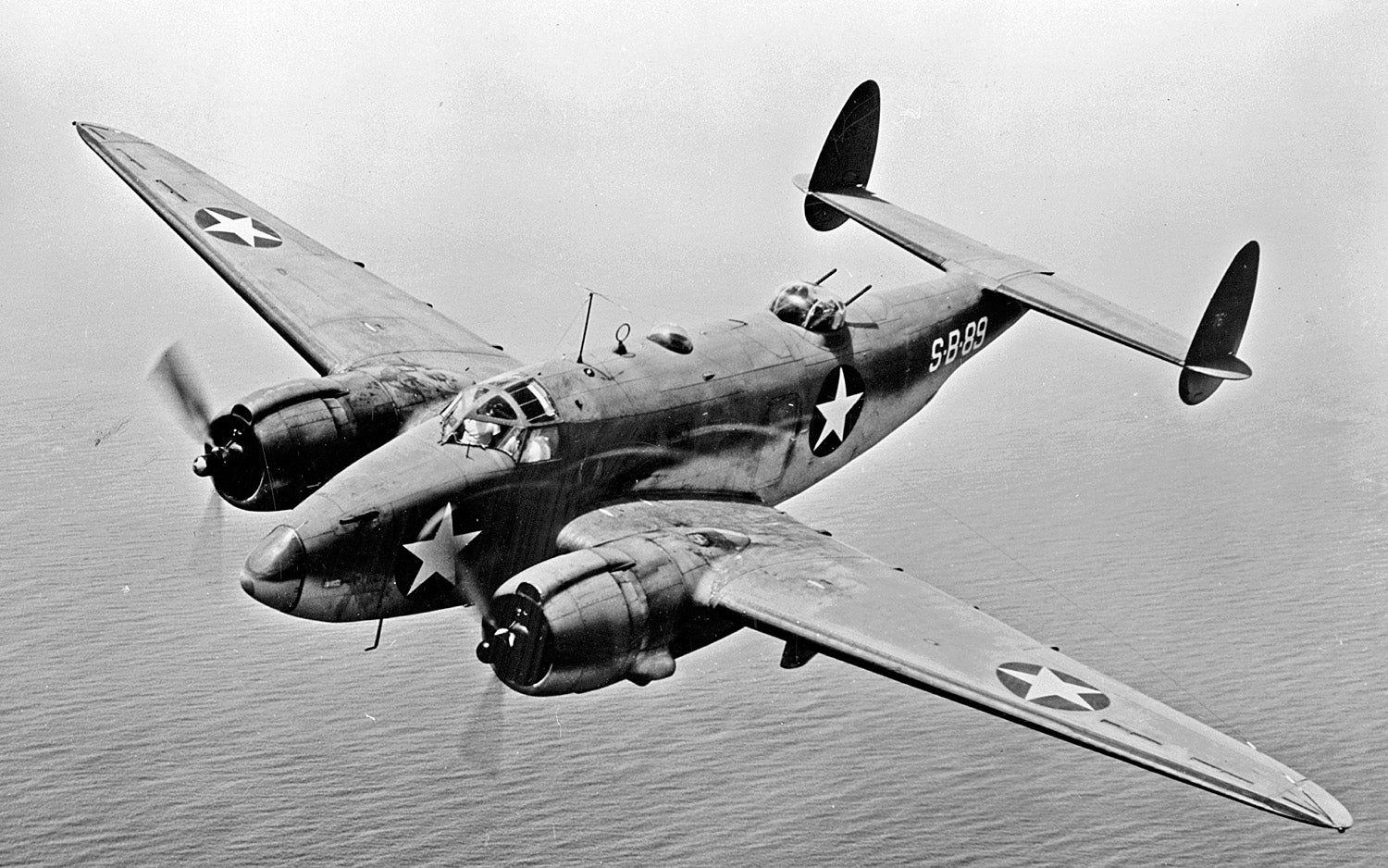
July 31, 1941 – The first flight of the Lockheed Ventura. Developed from the Lockheed Model 18 Lodestar, the Ventura was intended to replace the Lockheed Hudson in maritime patrol duties, and was eventually developed into the much more capable Lockheed Harpoon.
•••••••••••••••••••••••
If you enjoy these Aviation History posts, please let me know in the comments. And if you missed any of the past articles, you can find them all at !!!error: Indecipherable SUB-paragraph formatting!!! .
Unless otherwise credited, all photos are, or are believed to be, Public Domain, ownership could not be determined, or were taken by the author.
 Jcarr
> ttyymmnn
Jcarr
> ttyymmnn
07/31/2015 at 13:47 |
|
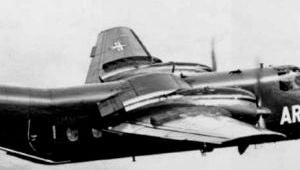
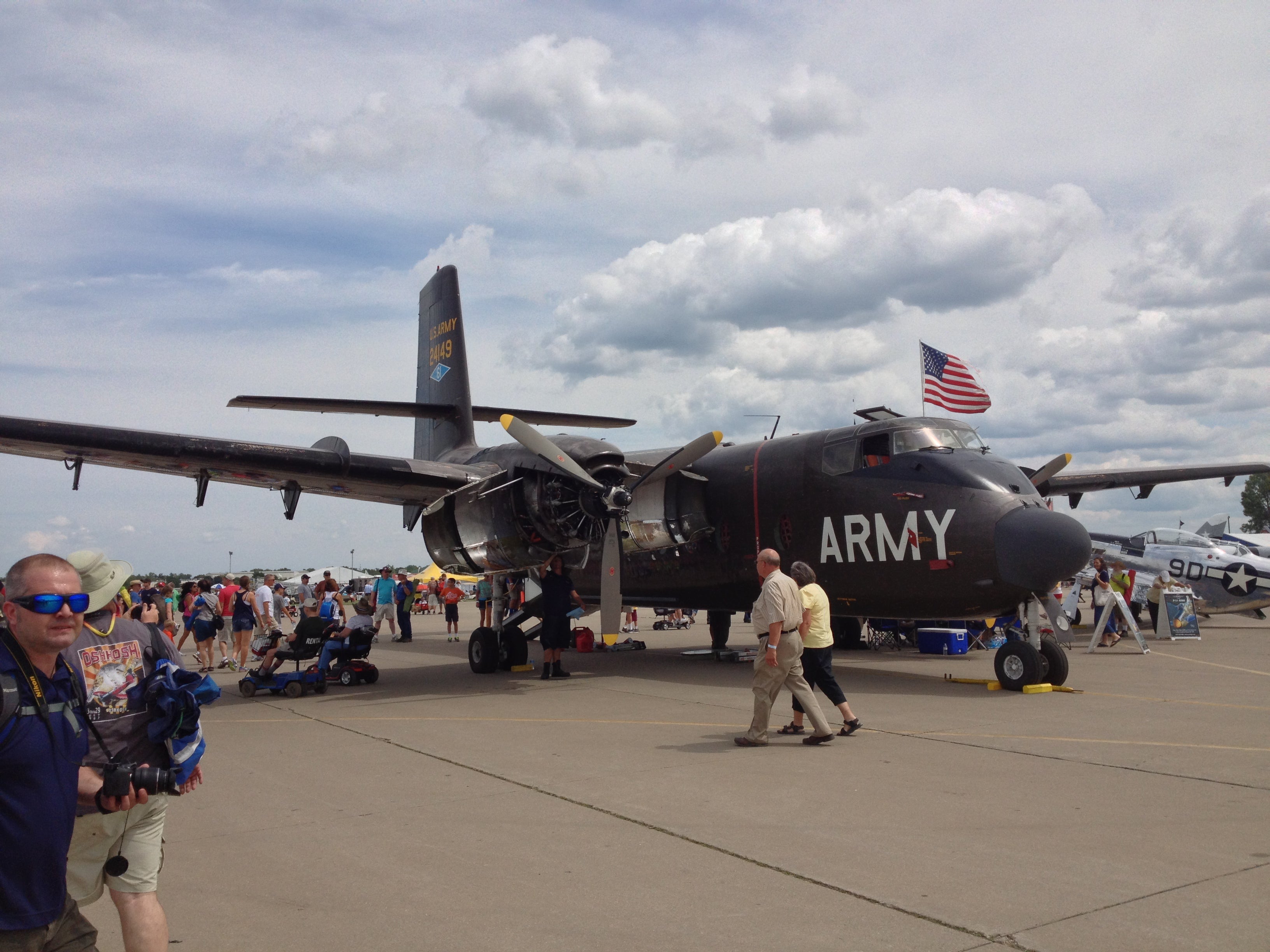
I had the opportunity to see a Caribou from the Cavanaugh Flight Museum at Oshkosh a couple years ago. Interesting aircraft. It still had bullet holes in it from Vietnam.
 You can tell a Finn but you can't tell him much
> ttyymmnn
You can tell a Finn but you can't tell him much
> ttyymmnn
07/31/2015 at 13:47 |
|
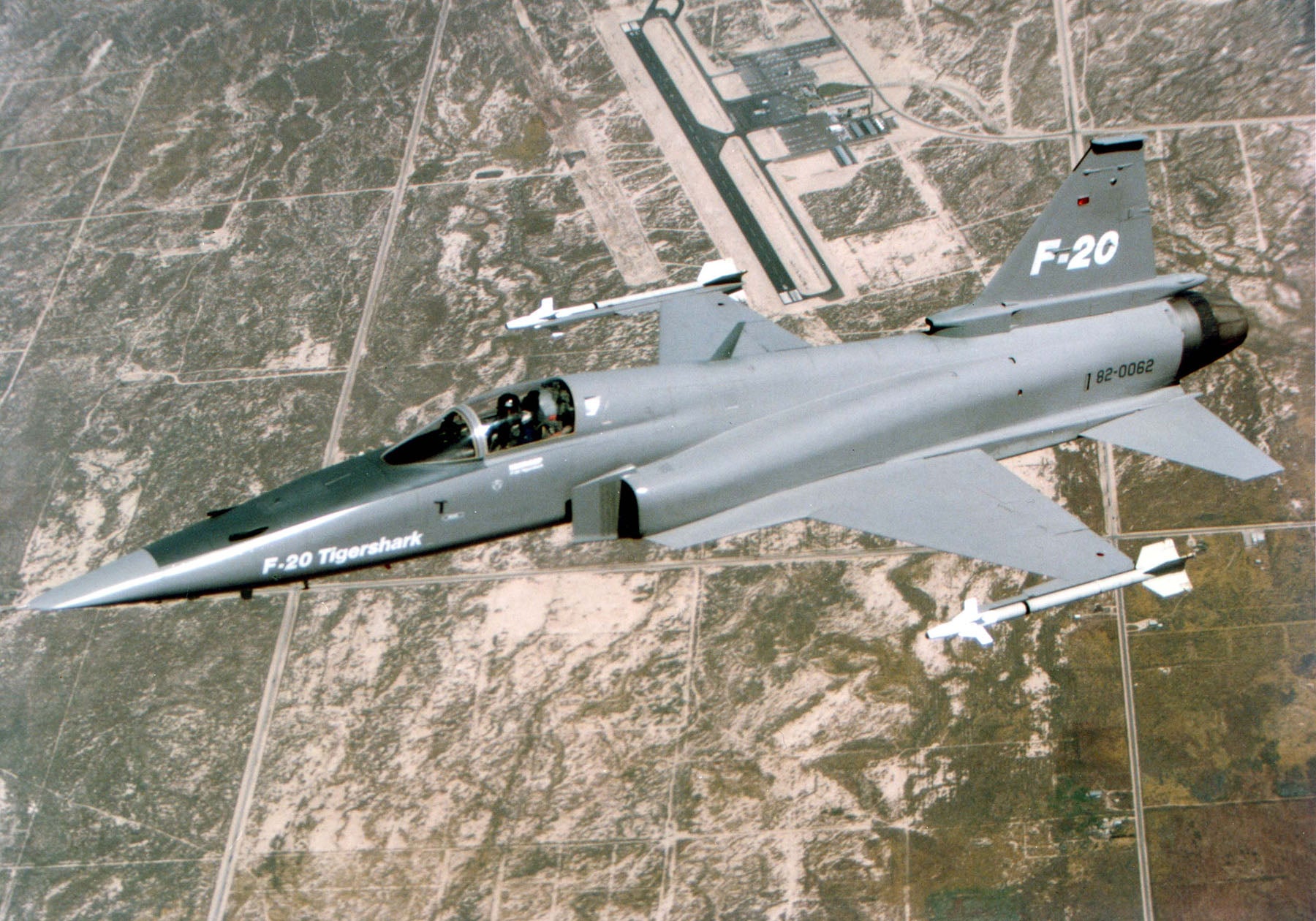

 Jcarr
> You can tell a Finn but you can't tell him much
Jcarr
> You can tell a Finn but you can't tell him much
07/31/2015 at 13:54 |
|
As much as I love the F-16, you cannot deny the sexiness of the Tigershark.
 Racescort666
> ttyymmnn
Racescort666
> ttyymmnn
07/31/2015 at 13:55 |
|
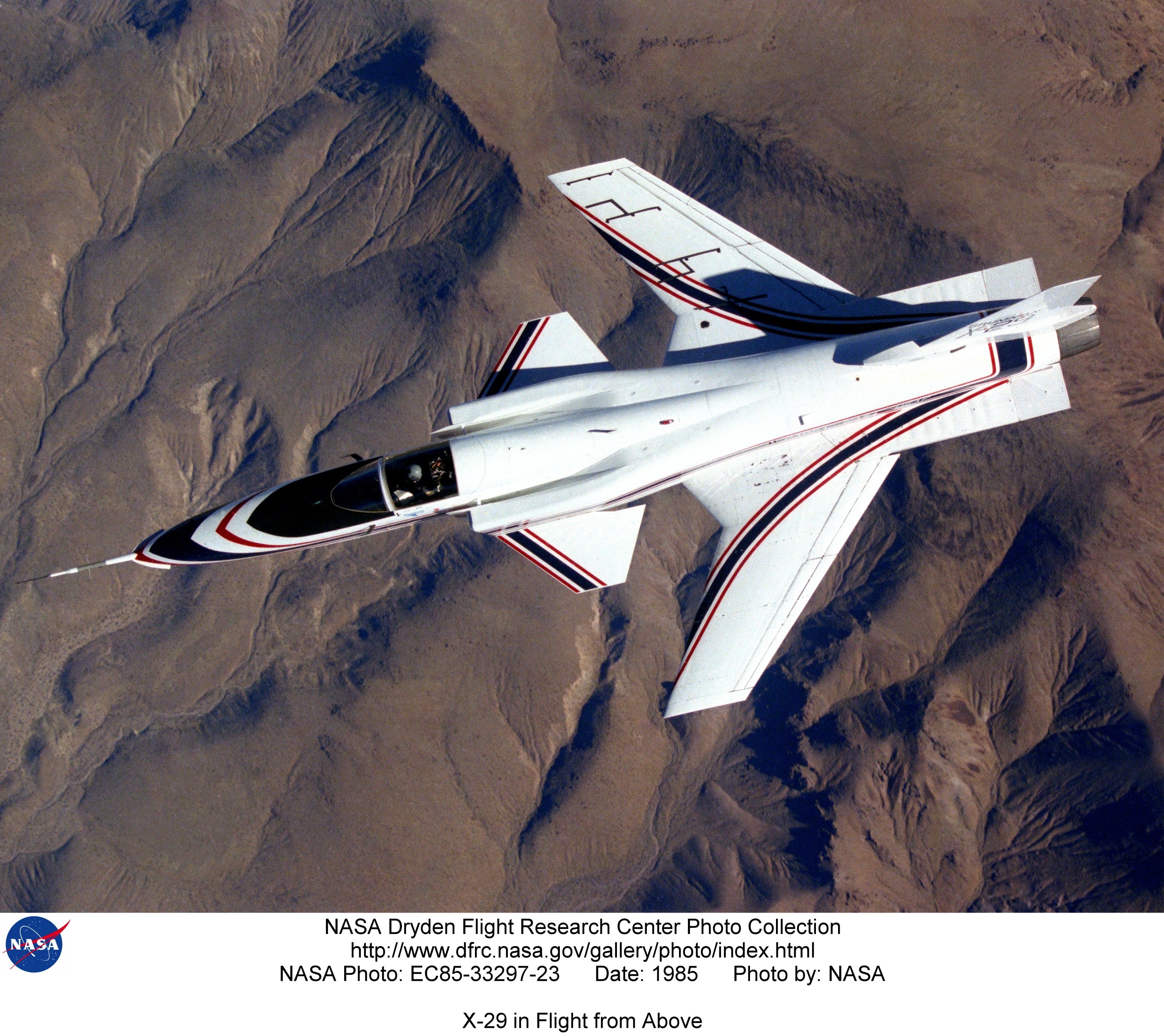
It’s probably also worth noting that the F-5 was the basis for the X-29 although it’s pretty much just the forward fuselage that’s the same. This is probably my favorite aircraft though.
 McMike
> ttyymmnn
McMike
> ttyymmnn
07/31/2015 at 13:57 |
|
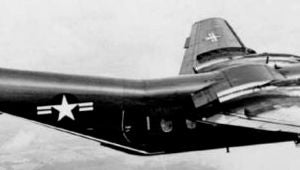
Pops spent a year with these things in Vietnam between ‘66-’67 with both the Army and the Air Force.
Aircraft Maintenance Officer, Army 17th Aviation Group, Tan Son Nhut Air Base
Maintenance Control Officer, 537th Troop Carrier Squadron, Phu Cat Air Base
 MonkeePuzzle
> ttyymmnn
MonkeePuzzle
> ttyymmnn
07/31/2015 at 14:06 |
|
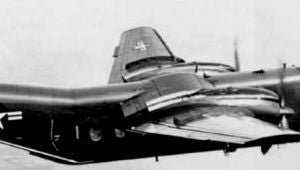
caribou, such a good looking plane, and seemingly indestructible work horse
 whoarder is tellurium
> ttyymmnn
whoarder is tellurium
> ttyymmnn
07/31/2015 at 14:10 |
|
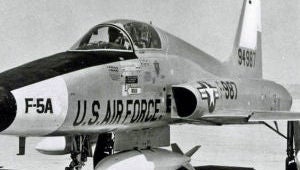
Love me some F-5! Long live the F-5.
At least, the F-5’s genes live on in the F/A-18.
 ttyymmnn
> MonkeePuzzle
ttyymmnn
> MonkeePuzzle
07/31/2015 at 14:11 |
|
Pretty much. There is a video on the internet, though, of a Caribou crash on takeoff because the ground crew failed to take off the control surface locks, and the pilots didn’t catch it preflight. I won’t link it, but it’s pretty easy to find.
 ttyymmnn
> You can tell a Finn but you can't tell him much
ttyymmnn
> You can tell a Finn but you can't tell him much
07/31/2015 at 14:11 |
|
The best fighter that never was.
 You can tell a Finn but you can't tell him much
> Jcarr
You can tell a Finn but you can't tell him much
> Jcarr
07/31/2015 at 14:15 |
|
It is my favorite looking fighter and could have been great. The proportions are just right and the lines are so clean that you just can’t get tired of looking at it.
 ttyymmnn
> Jcarr
ttyymmnn
> Jcarr
07/31/2015 at 14:15 |
|
I saw that same Caribou last spring in Abilene, where it was carrying parachutists for the Dyess AFB Air Fest. I couldn’t get to the show, but I made it to Friday practice. Not the greatest day for photography.
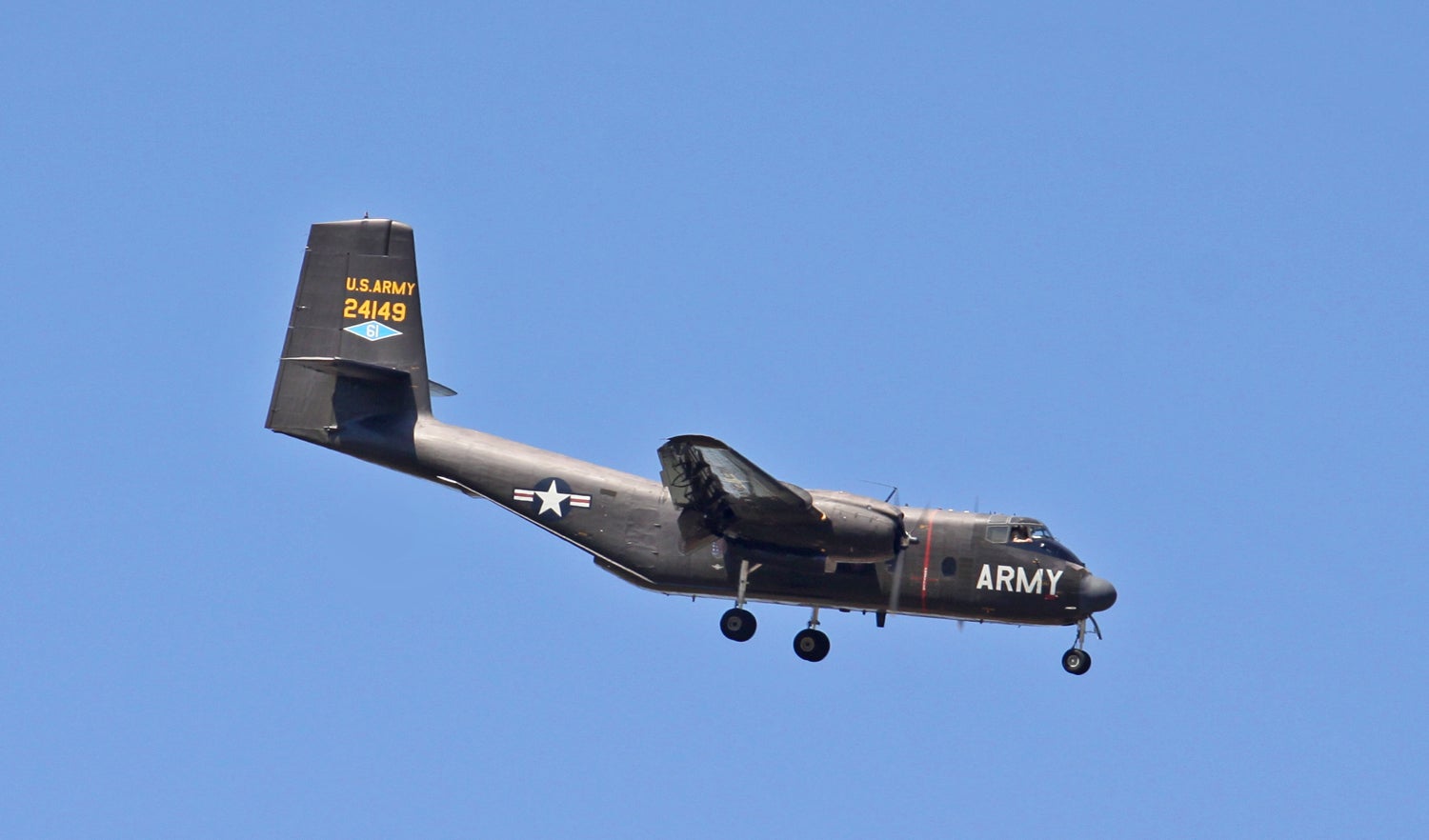
 ttyymmnn
> McMike
ttyymmnn
> McMike
07/31/2015 at 14:16 |
|
The Caribou was, I think, the last fixed-wing aircraft flown, or at least procured, by the Army.
 ttyymmnn
> whoarder is tellurium
ttyymmnn
> whoarder is tellurium
07/31/2015 at 14:19 |
|
It does. And the Swiss still operate them, and come up with some of the best aerial shots in the world.
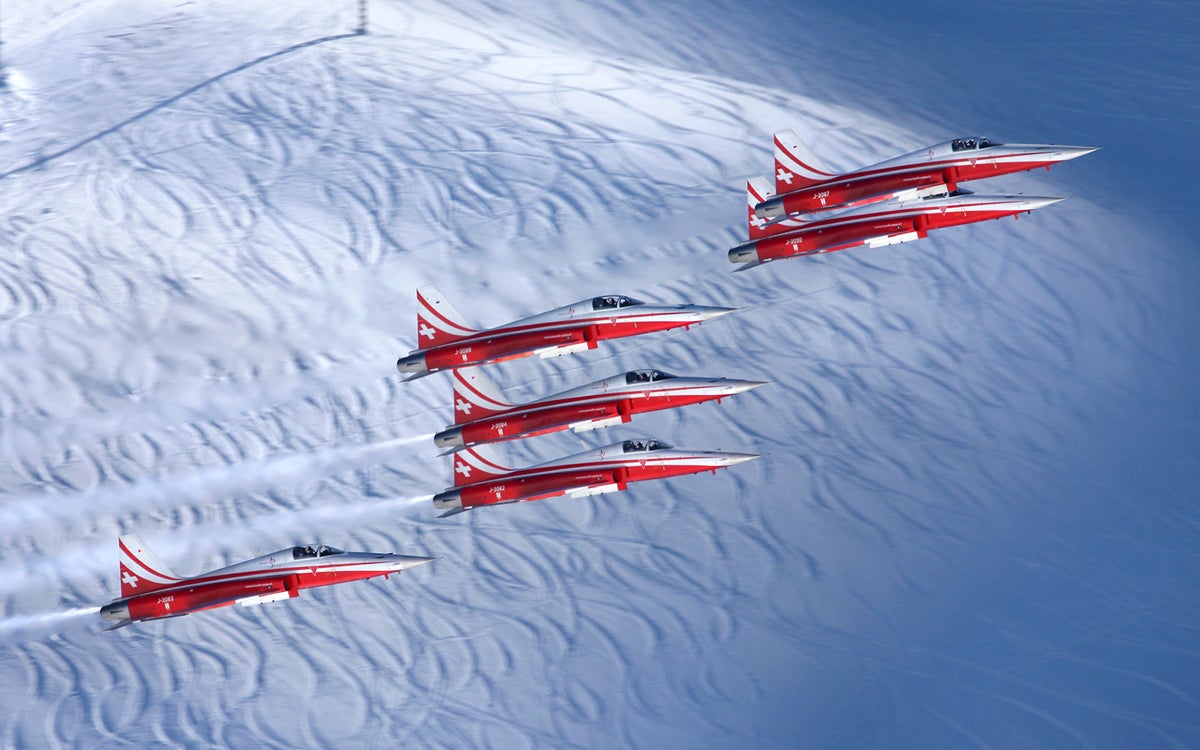
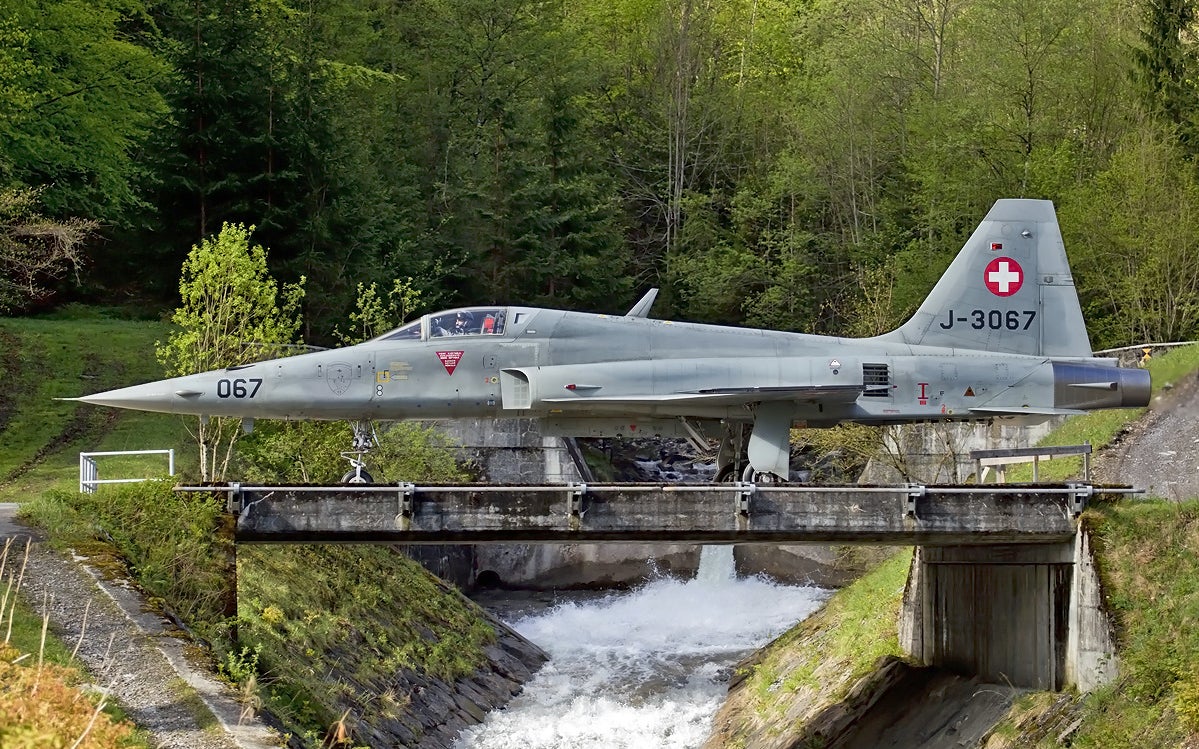
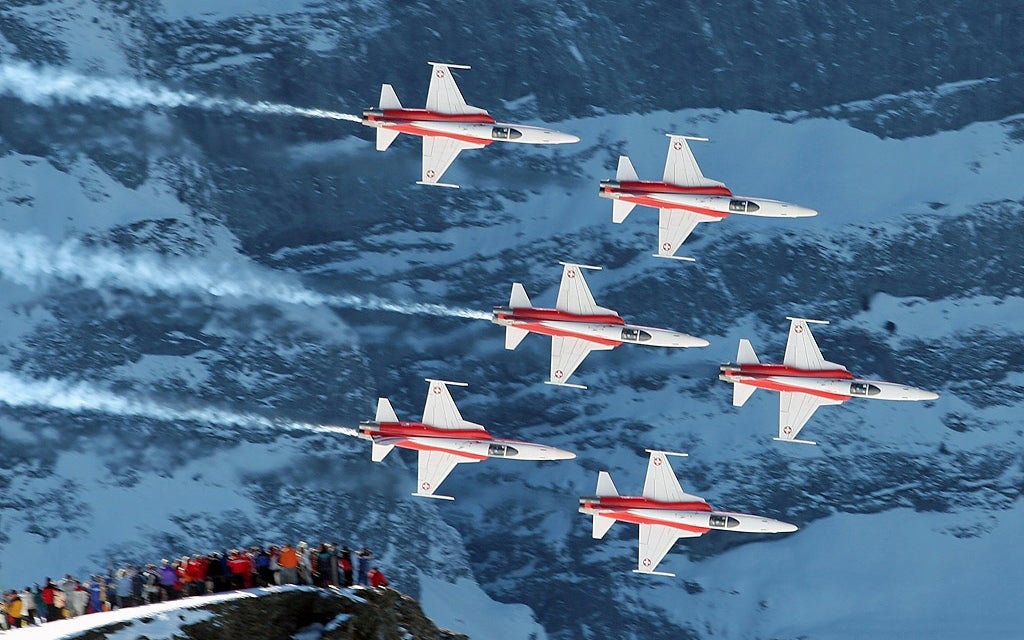
 MonkeePuzzle
> ttyymmnn
MonkeePuzzle
> ttyymmnn
07/31/2015 at 14:21 |
|
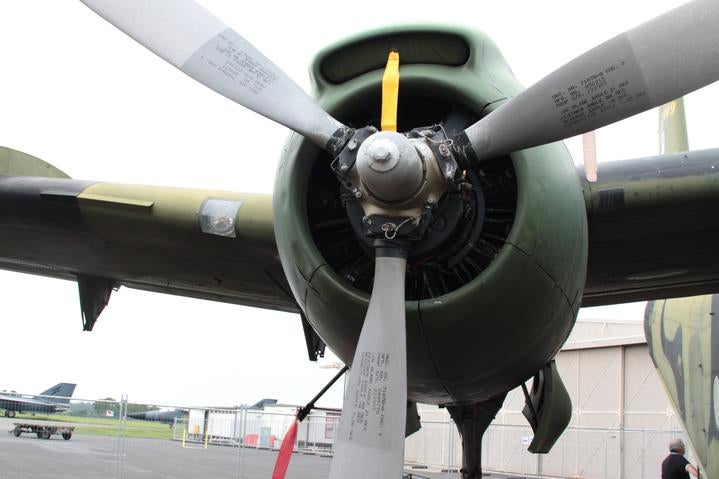
thought you might appreciate some Caribou in Australia
My brother took these pics as an air show in 2011:
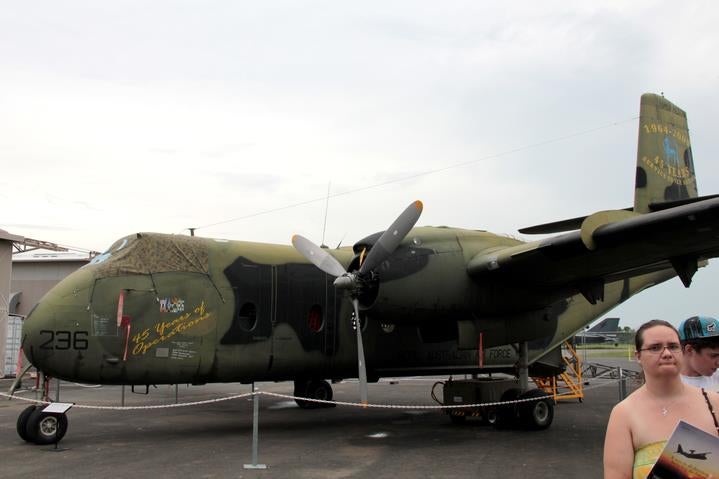
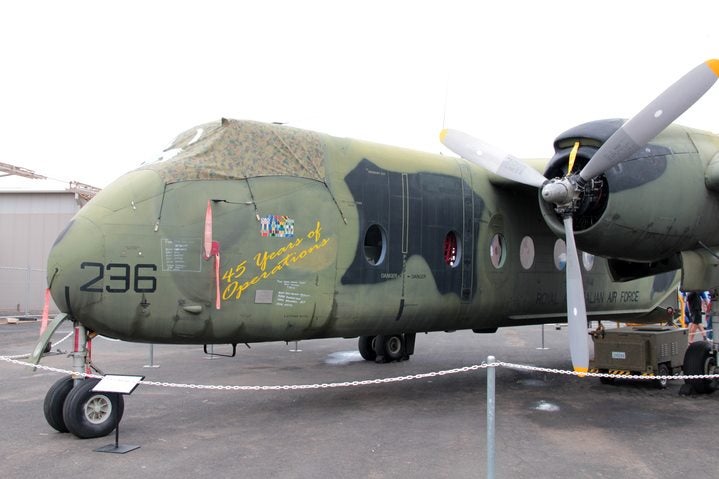
my father is the chap in the blue shirt at the back, relevant for the below pics
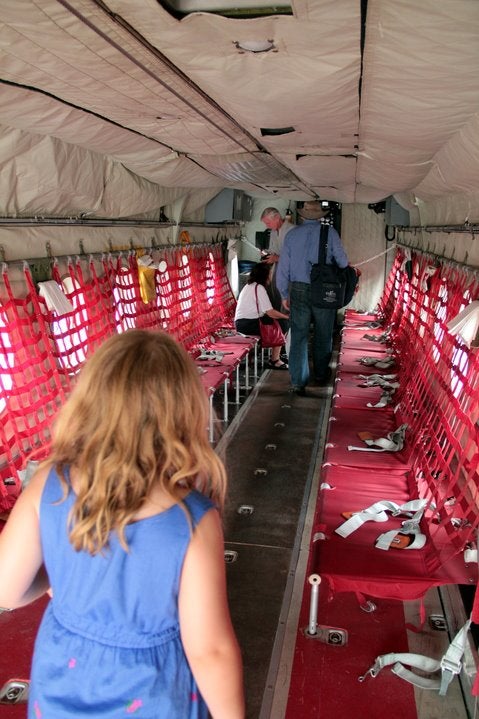
Air sick bags on the wall, my dad reports these were ESSENTIAL!
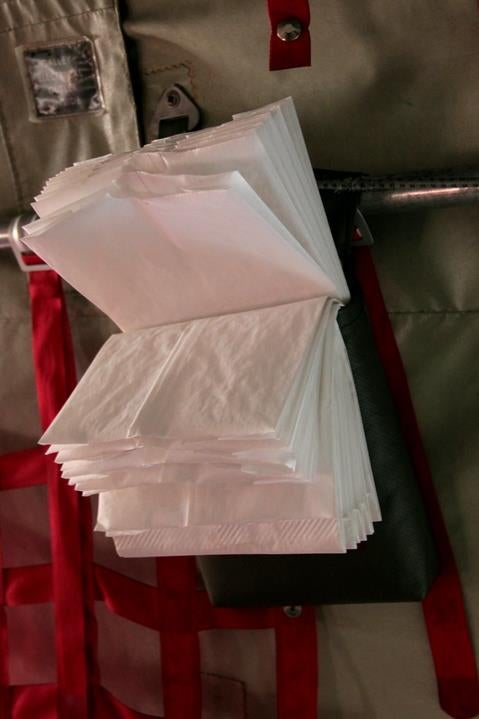
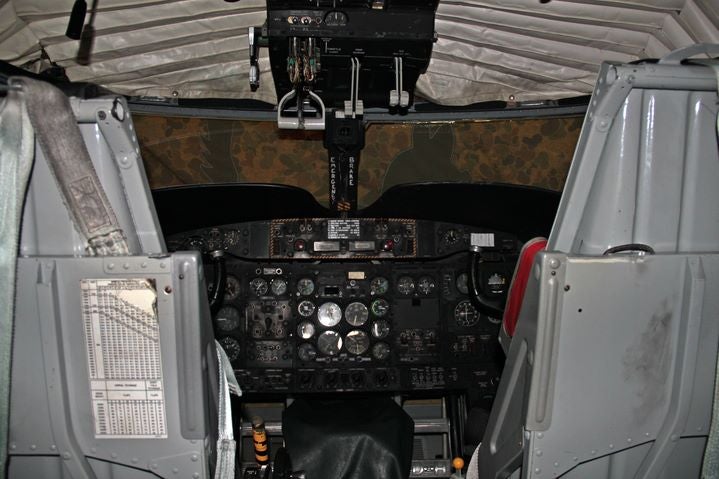
My Dad one upped him by sharing these pics from his training in Tin Can Bay prior to his deployment to Vietnam:
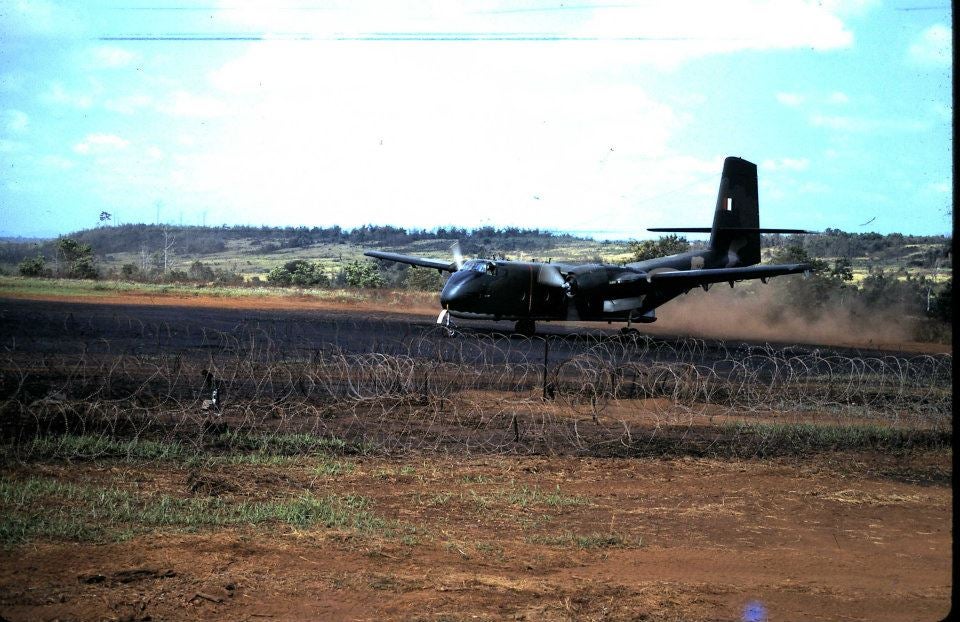
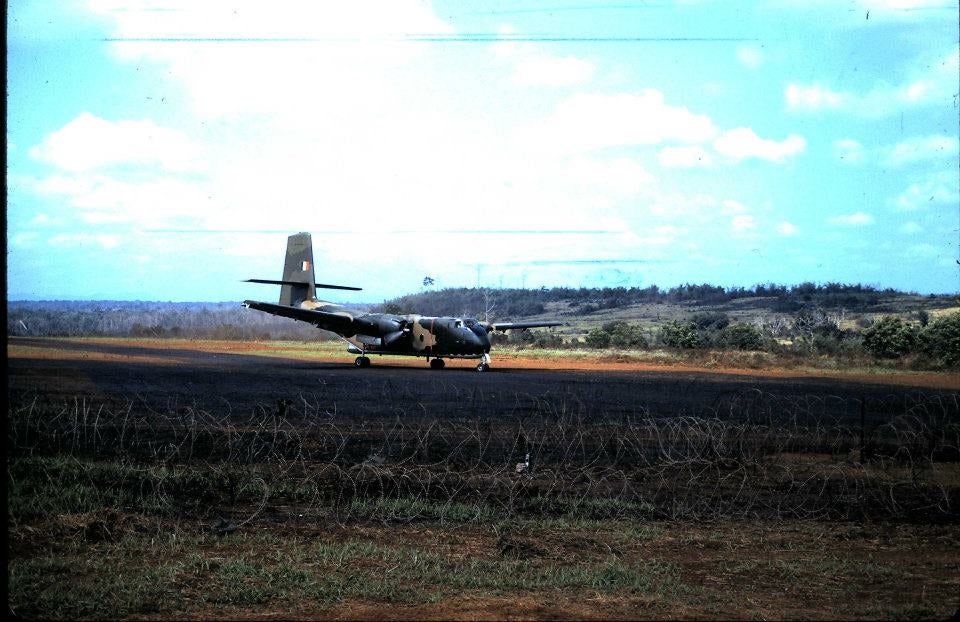
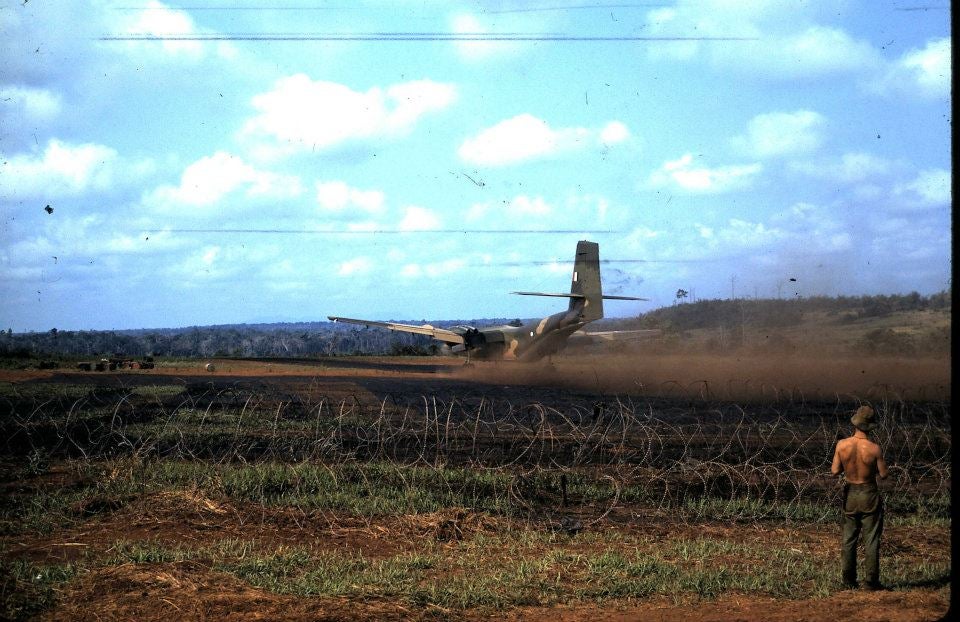
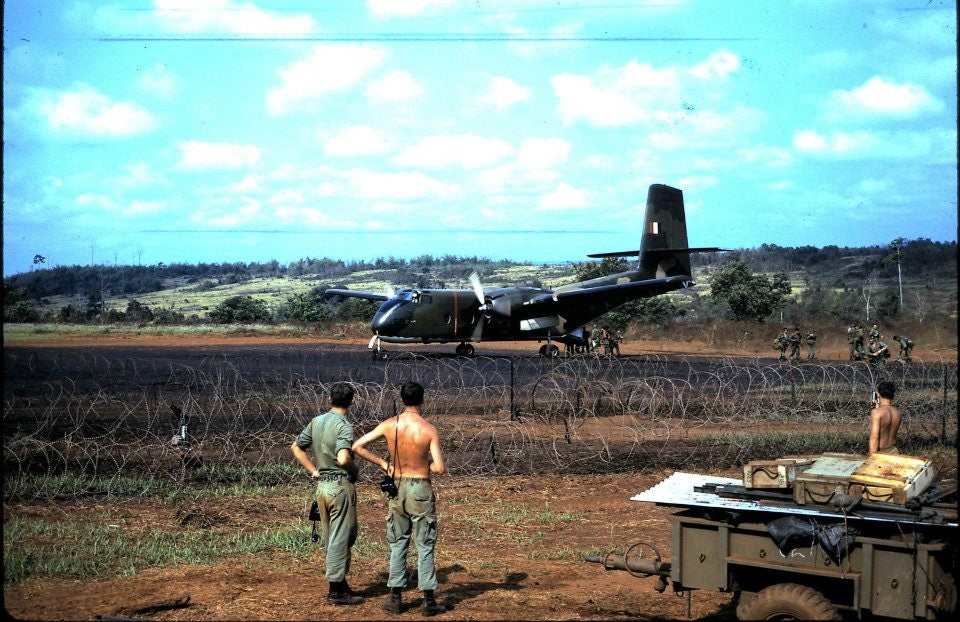
 ttyymmnn
> MonkeePuzzle
ttyymmnn
> MonkeePuzzle
07/31/2015 at 14:24 |
|
Thanks for the pics. Those Vietnam shots are great.
 MonkeePuzzle
> ttyymmnn
MonkeePuzzle
> ttyymmnn
07/31/2015 at 14:24 |
|
my favourite part of Dad’s pics from 1969 is the guy bottom right holding a white rectangle like an iphone :D
 McMike
> ttyymmnn
McMike
> ttyymmnn
07/31/2015 at 14:29 |
|
Per wikipedia
Under the Johnson-McConnell agreement of 1966, the Army relinquished the fixed wing Caribou to the United States Air Force in exchange for an end to restrictions on Army rotary wing operations. On 1 January 1967, the 17th , 57th, 61st, 92nd, 134th, and 135th Aviation Companies of the U.S. Army were inactivated and their aircraft transferred respectively to the newly activated 537th, 535th, 536th, 459th, 457th, and 458th Troop Carrier Squadrons of the USAF. On 1 August 1967 the “troop carrier” designations were changed to “tactical airlift”.
Dad was probably like,
“Whatever, I didn’t like those Army guys, anyways”
 Jcarr
> You can tell a Finn but you can't tell him much
Jcarr
> You can tell a Finn but you can't tell him much
07/31/2015 at 14:29 |
|
Yep. It’s like the kinda-cute girl next door (F-5/T-38) that grew up to be really hot.
 ttyymmnn
> MonkeePuzzle
ttyymmnn
> MonkeePuzzle
07/31/2015 at 14:34 |
|
He’s a time traveler!
 The Powershift in Steve's '12 Ford Focus killed it's TCM (under warranty!)
> ttyymmnn
The Powershift in Steve's '12 Ford Focus killed it's TCM (under warranty!)
> ttyymmnn
07/31/2015 at 15:07 |
|
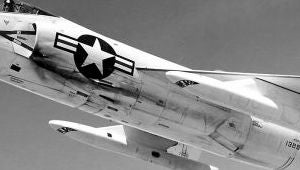
Well, that’s going into the wallpaper rotation...
 ttyymmnn
> The Powershift in Steve's '12 Ford Focus killed it's TCM (under warranty!)
ttyymmnn
> The Powershift in Steve's '12 Ford Focus killed it's TCM (under warranty!)
07/31/2015 at 15:55 |
|
Here’s the hi-res version .
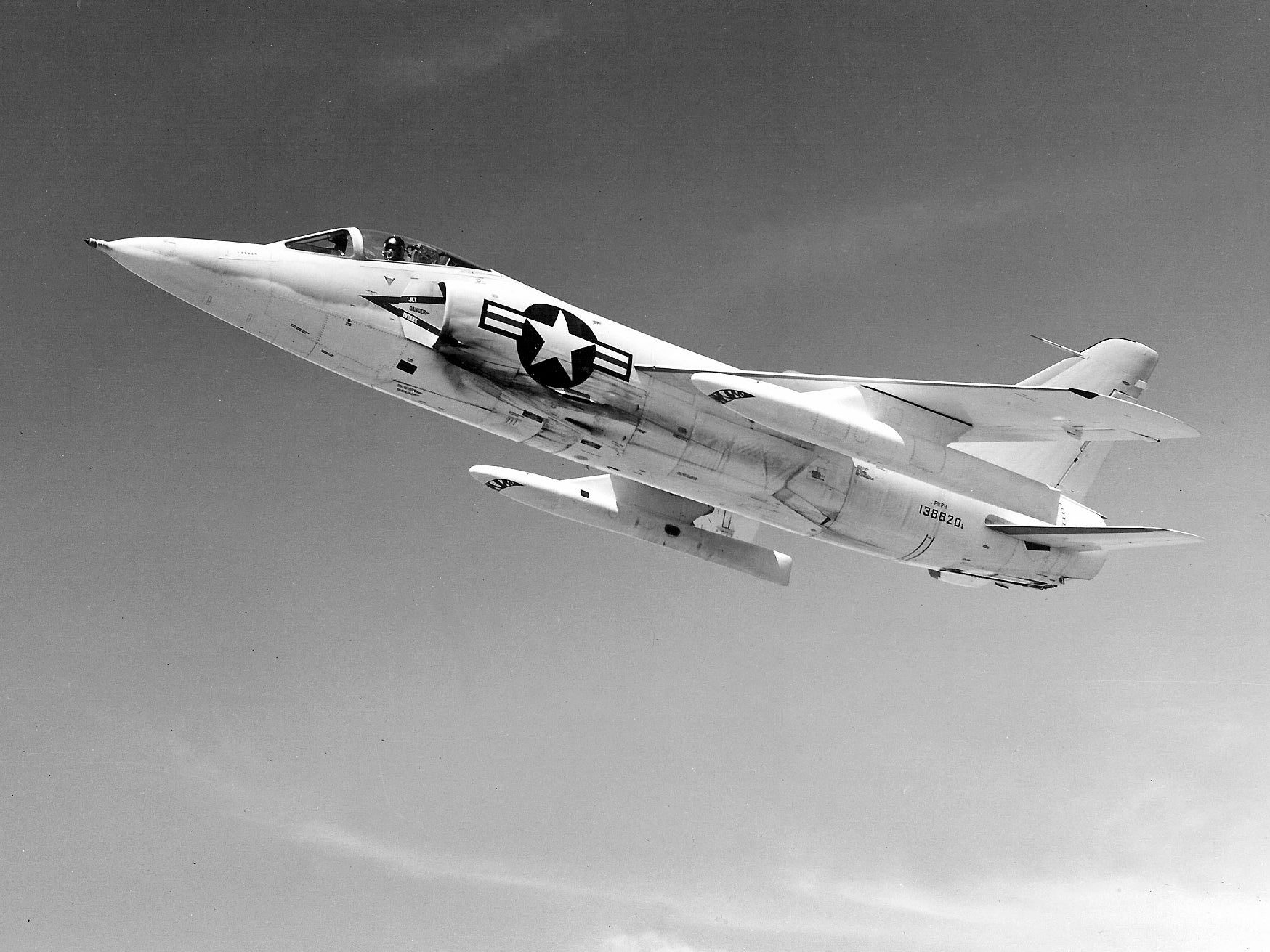
 Gonemad
> ttyymmnn
Gonemad
> ttyymmnn
07/31/2015 at 16:00 |
|
To appease the bomb handlers on the carrier, the bombs were stored on the flight deck, rather than in the armory below decks where an accidental detonation would sink the entire ship.
You betcha your ass. Those bomb handlers knew their business like anyone. Did they get medals for this?
And the airplane sitting next to the bombs cooking in burning fuel was crewed by Senator (then Lt. Cmdr.) John McCain, if Wikipedia is correct.
https://en.wikipedia.org/wiki/1967_USS_…
 Gonemad
> ttyymmnn
Gonemad
> ttyymmnn
07/31/2015 at 16:02 |
|
Were not these that posed as Migs in Top Gun?
 You can tell a Finn but you can't tell him much
> Gonemad
You can tell a Finn but you can't tell him much
> Gonemad
07/31/2015 at 16:08 |
|
Pretty sure the MiG’s in Top Gun were F-5’s which these were based off. The F-5 spawned the T-38, F-20 and major parts of the F-18.
 ttyymmnn
> You can tell a Finn but you can't tell him much
ttyymmnn
> You can tell a Finn but you can't tell him much
07/31/2015 at 16:16 |
|
Actually, the T-38 spawned the F-5. The Air Force and Navy were more interested in a jet trainer, and the T-38 was actually produced first.
 ttyymmnn
> Gonemad
ttyymmnn
> Gonemad
07/31/2015 at 16:18 |
|
Yes, the MiGs in Top Gun, the mythical MiG-28, was actually the F-5 and the T-38 (in the inverted scene). The real Top Gun school uses the F-5 in the aggressor role for training.
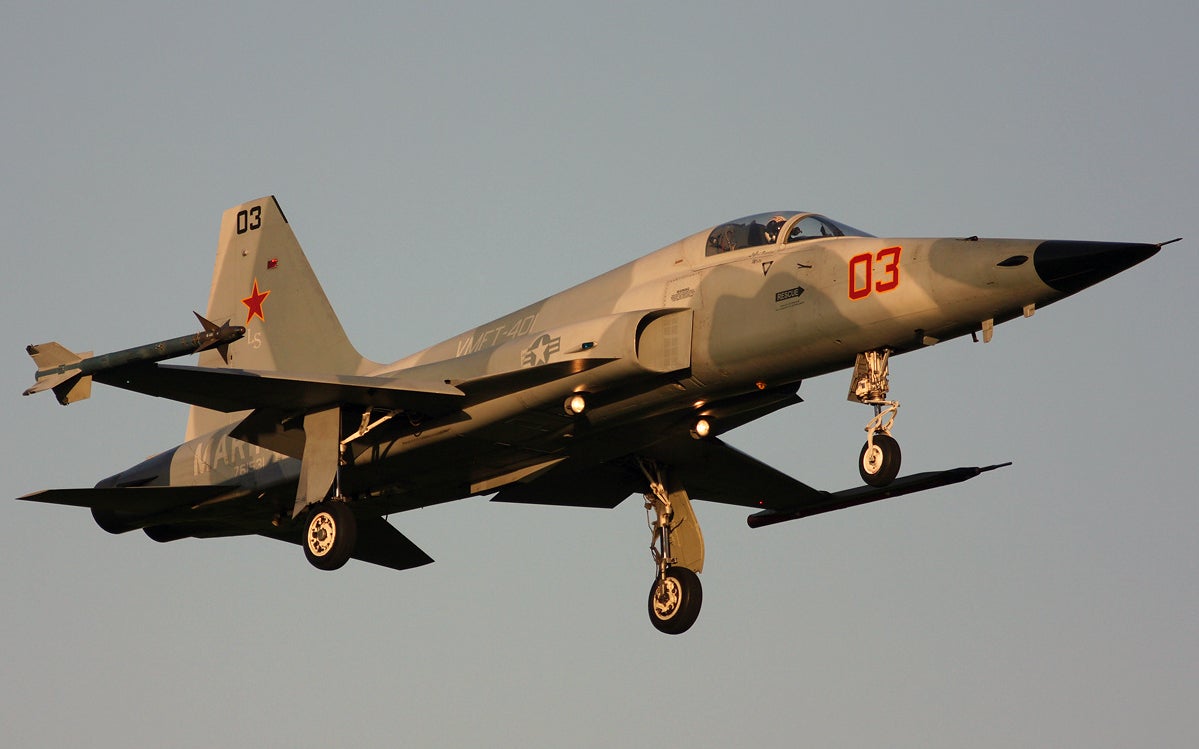
 ttyymmnn
> Gonemad
ttyymmnn
> Gonemad
07/31/2015 at 16:23 |
|
Wikipedia is correct. McCain led somewhat of a charmed life, if you can count 5 years in Hanoi as good luck. But he didn’t die. The whole story of the unstable 1000-pounders is a classic story of military SNAFU. I couldn’t go into too much detail in the limited space, but those bombs should have been dumped in the ocean years earlier.
 You can tell a Finn but you can't tell him much
> ttyymmnn
You can tell a Finn but you can't tell him much
> ttyymmnn
07/31/2015 at 16:23 |
|
From the Wikipedia, so take it with a grain of salt.
Though the USAF had no acknowledged need for a light fighter, it did procure roughly 1,200 Northrop T-38 Talon trainer aircraft, which were directly based on the F-5A.
Curiously the first flight of the T-38 is 10 March 1959 which predates the first flight of the F-5, 30 July 1959, by a couple months.
 ttyymmnn
> You can tell a Finn but you can't tell him much
ttyymmnn
> You can tell a Finn but you can't tell him much
07/31/2015 at 16:39 |
|
From what I consider to be a trusted source (not Wikipedia):
The Freedom Fighter began as a company funded project in November 1955. The development by General Electric of a lightweight, high velocity output engine caught the attention of Northrop’s engineering staff. The engine was intended primarily for missiles, but Northrop’s designers could see in it the potential for an uncomplicated supersonic fighter. When the Air Force issued a list of requirements for a supersonic trainer, Northrop began to conform their new fighter ideas around the trainer concept as well, designating their designs N-156F and N-156T. The latter was finally to emerge as the T-38 Talon.
In the meantime the Air Force showed more than a passing interest in the N-156F; the Defense Department underwrote nearly $50 million for assembly of three aircraft and refinement of the engines. The first plane, 59-4987, was completed and flown on July 30, 1959....
And from another source :
As mentioned briefly in the description of the Northrop F-5A/B, the evolution of that tactical fighter had begun with Northrop’s N-156 concept which, after two years of development as a private venture, had resulted in a supersonic trainer which in 1956 was identified as the N-156T and submitted as a proposal to the USAF. Three prototypes were ordered in December 1956 for development as a two-seat supersonic basic trainer (the first and, except for the Mitsubishi T18, only such aircraft in the world). The first of these made its initial flight on 10 April 1959 at Edwards AFB in California. By that time there had been a contract revision, concluded in June 1958, for the supply of six aircraft under the designation YT-38, plus one airframe for static testing.
So, I guess it’s not exactly correct to say that the T-38 spawned the F-5. Northrop began developing the F-5, but the AF showed more interest, at first, in a trainer, so Northrop changed direction and developed the T-38 first, while still working on the single-seat fighter version, which also caught the Air Force’s attention.
 The Powershift in Steve's '12 Ford Focus killed it's TCM (under warranty!)
> ttyymmnn
The Powershift in Steve's '12 Ford Focus killed it's TCM (under warranty!)
> ttyymmnn
08/03/2015 at 08:12 |
|
You’re the best!
 ttyymmnn
> The Powershift in Steve's '12 Ford Focus killed it's TCM (under warranty!)
ttyymmnn
> The Powershift in Steve's '12 Ford Focus killed it's TCM (under warranty!)
08/03/2015 at 08:36 |
|
:D
 MonkeePuzzle
> McMike
MonkeePuzzle
> McMike
04/12/2016 at 12:45 |
|
today’s post on aviation history brought me back here to look at caribous. same same, my “pops” also spent much time on these during his Vietnam deployment. See my post directly above for pics :D
http://oppositelock.kinja.com/thought-you-mi…